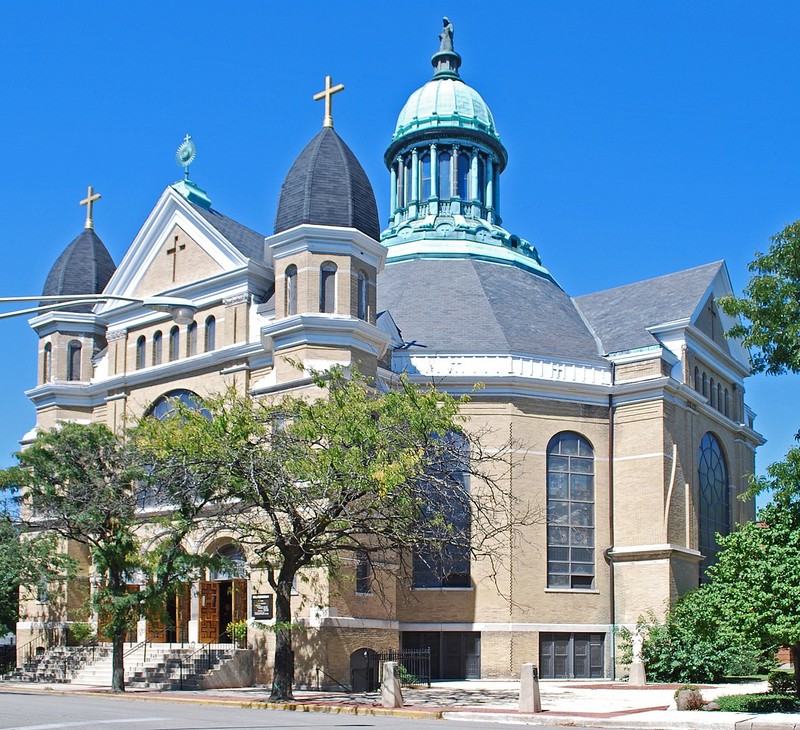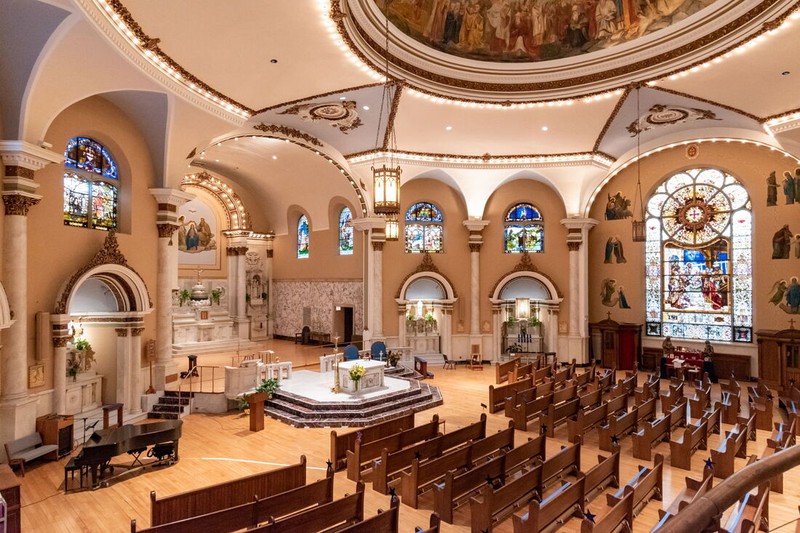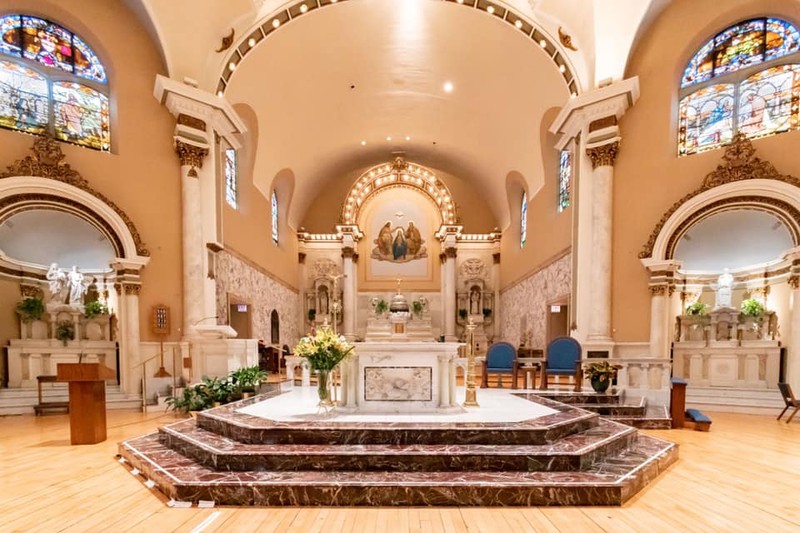Notre Dame de Chicago
Introduction
Text-to-speech Audio
Notre Dame de Chicago was constructed from 1889 to 1892 in the then-new Romanesque Revival style. The Chicago landmark represents the significance of French immigration to Chicago within a narrative that typically emphasizes European immigrants who came in even larger numbers such as Irish, Germans, and Poles. The church is the city's most prominent surviving landmark of French immigration history and the architectural style demonstrates a late nineteenth-century shift from Victorian and Gothic Revival to Romanesque. The building replaced an earlier structure built in 1865 and succeeded the St. Louis Church, Chicago's first French church (1850).
Images
Notre Dame de Chicago, Chicago IL

Our Lady of the Holy Family Parish at Notre Dame de Chicago

Our Lady of the Holy Family Parish at Notre Dame de Chicago

Backstory and Context
Text-to-speech Audio
From the 1763 Treaty of Paris to the 1803 Louisiana Purchase, the French all but vacated North America, leaving only the significant cultural reminder of their presence in Canada (French Canadians). By the 1840s, the French cultural existence in the Midwest U.S. had nearly vanished. However, during the second half of the nineteenth century, economic pressures pushed many French Canadians to immigrate to the U.S., including the Chicago area.
Father Isidore Le Bel constructed Chicago's first French church in 1853: The St. Louis Roman Catholic Church. But, in 1856, the growth of the French community led the congregation to petition Bishop O'Reagan for a new, larger church facility. However, the Irish Bishop resisted the idea and went as far as to create roadblocks for the French community even after they raised funds to build a new church. A new priest sympathetic to the French community arrived in 1859, which set in motion the slow process of constructing the first Notre Dame de Chicago (located on Congress and Halsted Streets in Chicago). The congregation first met in the new church in 1865. They remained in the first Notre Dame church until the 1880s when the community built a new school and church; the school opened in 1885, the rectory in 1886, and the now-historic church in 1892.
French Canadian architect Gregoire Vigeant designed the church in the French-inspired Romanesque Revival style. Whereas Victorian and Gothic Revival styles showcased the vertical, the French interpretation of the broader Romanesque style usually comprised large, simple forms and broad proportions with expansive windows and colorful interiors; the style more closely resembles French Renaissance designs than Richardsonian Romanesque.
Although the French appeared to be establishing a French enclave on Chicago's West Side, the community habitually moved west. By 1913, the French resident population substantially decreased, partly supplanted by a wave of Italian immigrants. So, in 1918, the church transferred to the Fathers of the Blessed Sacrament that, while operating as a French order, had a mission to administer more universally to the Catholic community regardless of their ethnicity. Ultimately, the church is the sole reminder of the brief but highly influential French community that once dominated the neighborhood.
Sources
Balesi, Charles J. "French and French Canadians." The Electronic Encyclopedia of Chicago. 2005. http://www.encyclopedia.chicagohistory.org/pages/488.html#:~:text=In%20the%201870s%20a%20large,War%20and%20World%20War%20I.
Schafer, Candace. "Nomination Form: Notre Dame de Chicago." National Register of Historic Places. archives.gov. 1979. https://catalog.archives.gov/id/28892412.
Snow, Daniel. "Of Three Nations: Devotion and Community in French-American Chicago, 1850–1950." Journal of the Illinois State Historical Society (1998-) 112, no. 1 (2019): 68–99.
By Andrew Jameson - Own work, CC BY-SA 3.0, https://commons.wikimedia.org/w/index.php?curid=11320259
Our Lady of the Holy Family Parish: https://www.olhfchi.org/
Our Lady of the Holy Family Parish: https://www.olhfchi.org/
